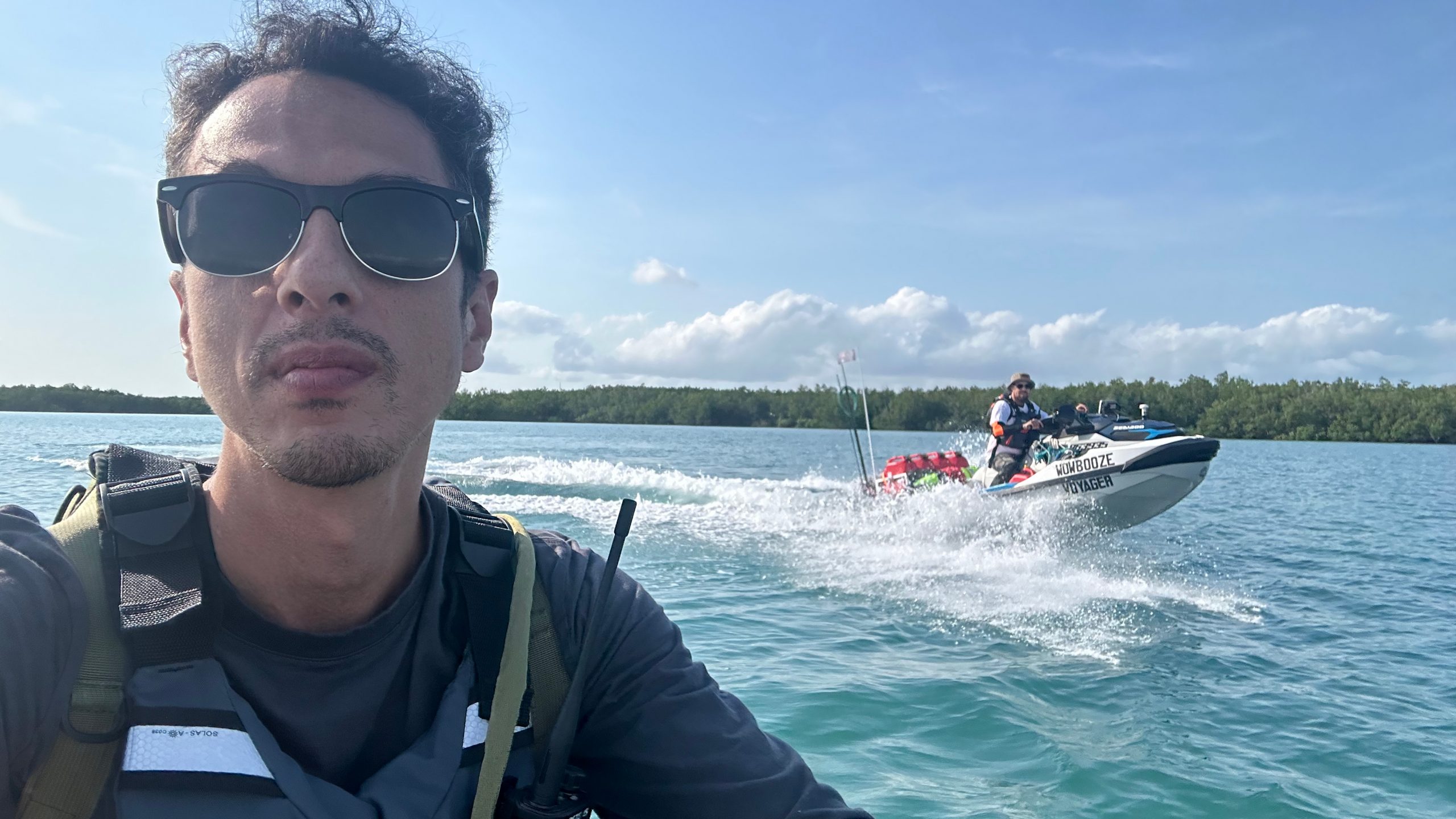Two novice riders who embarked on an epic Jet Ski journey from Darwin to Bali – on a pair of Sea-Doo Fish Pro watercraft – have arrived safely in Indonesian waters after completing the long-distance leg across the Timor Sea in the first two days of the expedition.
However, it wasn’t all plain sailing for Australian Daniel Wilkins and New Zealander Benjamin Nock, who have already covered more than 500km of a 2300km journey.
The pair have minor injuries – Wilkins is nursing an eye iritation and has limited visibility, and Nock has chafing from riding the ski.
They are now spending two days to recuperate before embarking on the next leg of the trip – an island hop that will take the Jet Skis all the way to Bali.
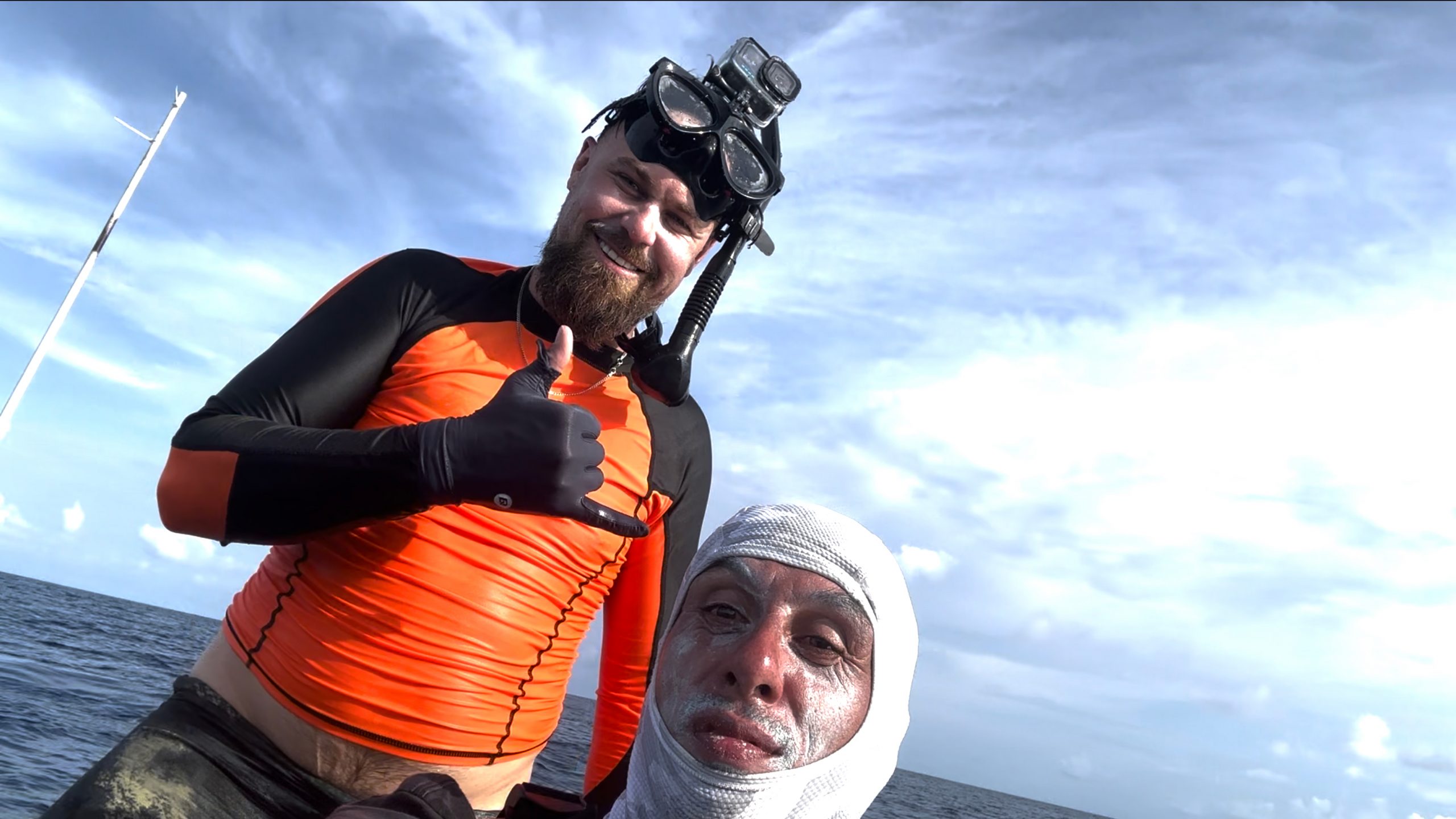
Above: Benjamin Nock (left) and Daniel Wilkins (right) go fishing about 100km south of the Indonesian port of Saumlaki.
The pair arrived exhausted and almost out of fuel in Indonesian waters last night (7 November 2024) after a 13-hour day that started and finished in the dark – with only a few litres of petrol remaining.
Despite each craft setting off with a total of 220 litres of fuel (70 litres in the ski’s standard tank and 150 litres in jerry cans), Wilkins estimates they were within minutes of running out of petrol when they finally made it to land last night on the remote Indonesian port of Saumlaki.
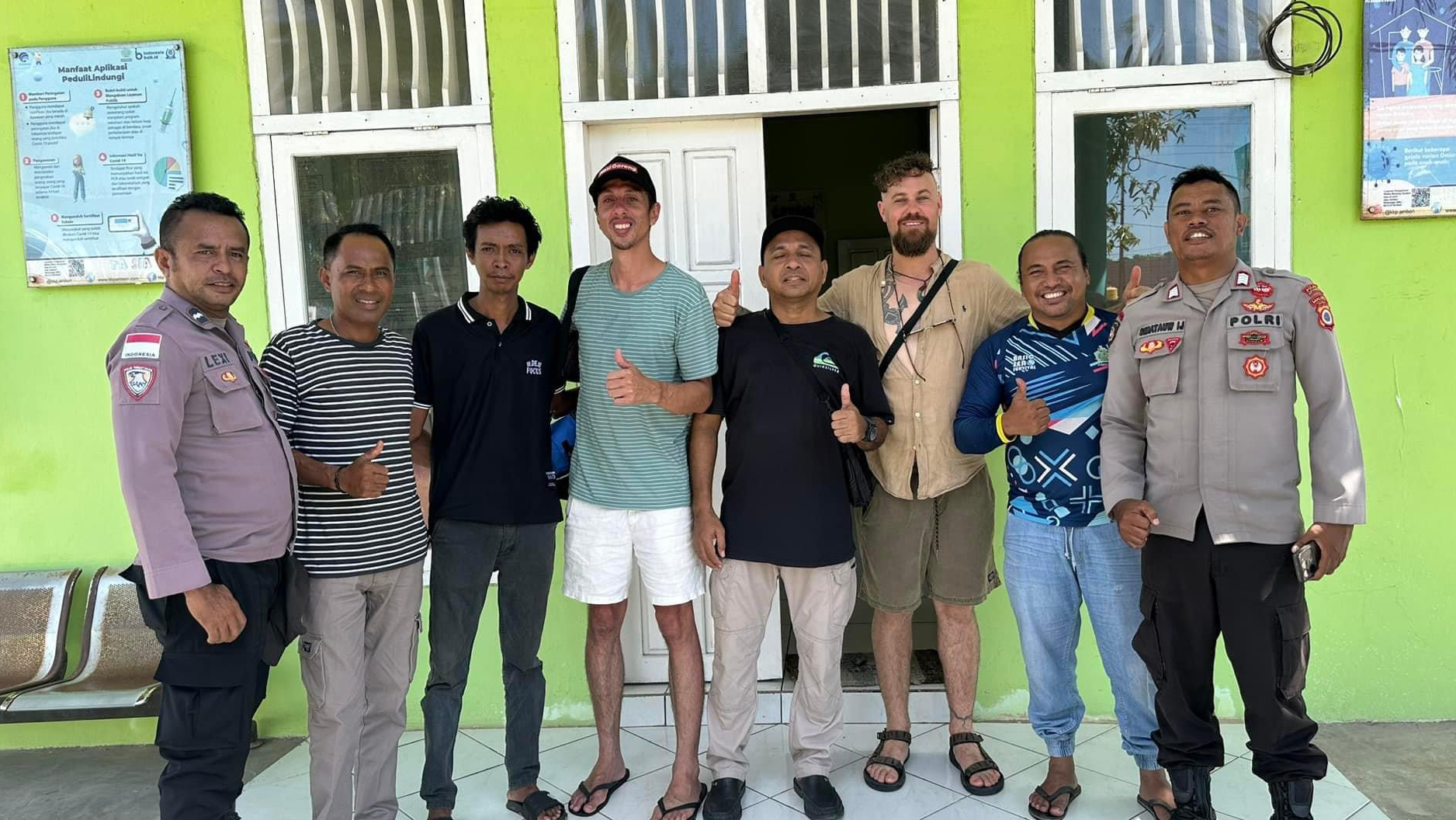
Above: Daniel Wilkins and Benjamin Nock arrive in Saumlaki to clear Indonesian Customs.
Saumlaki is the regional capital of a group of about 65 islands and is a popular destination for commercial vessels clearing Indonesian Customs from Australia – or leaving Indonesia destined for Australia.
Taking advantage of favourable weather, the riders left Darwin about 10:30am on Wednesday 6 November 2024 and planned to stop at Port Melville in the Australian Tiwi Islands about 100km north of Darwin on the first night.
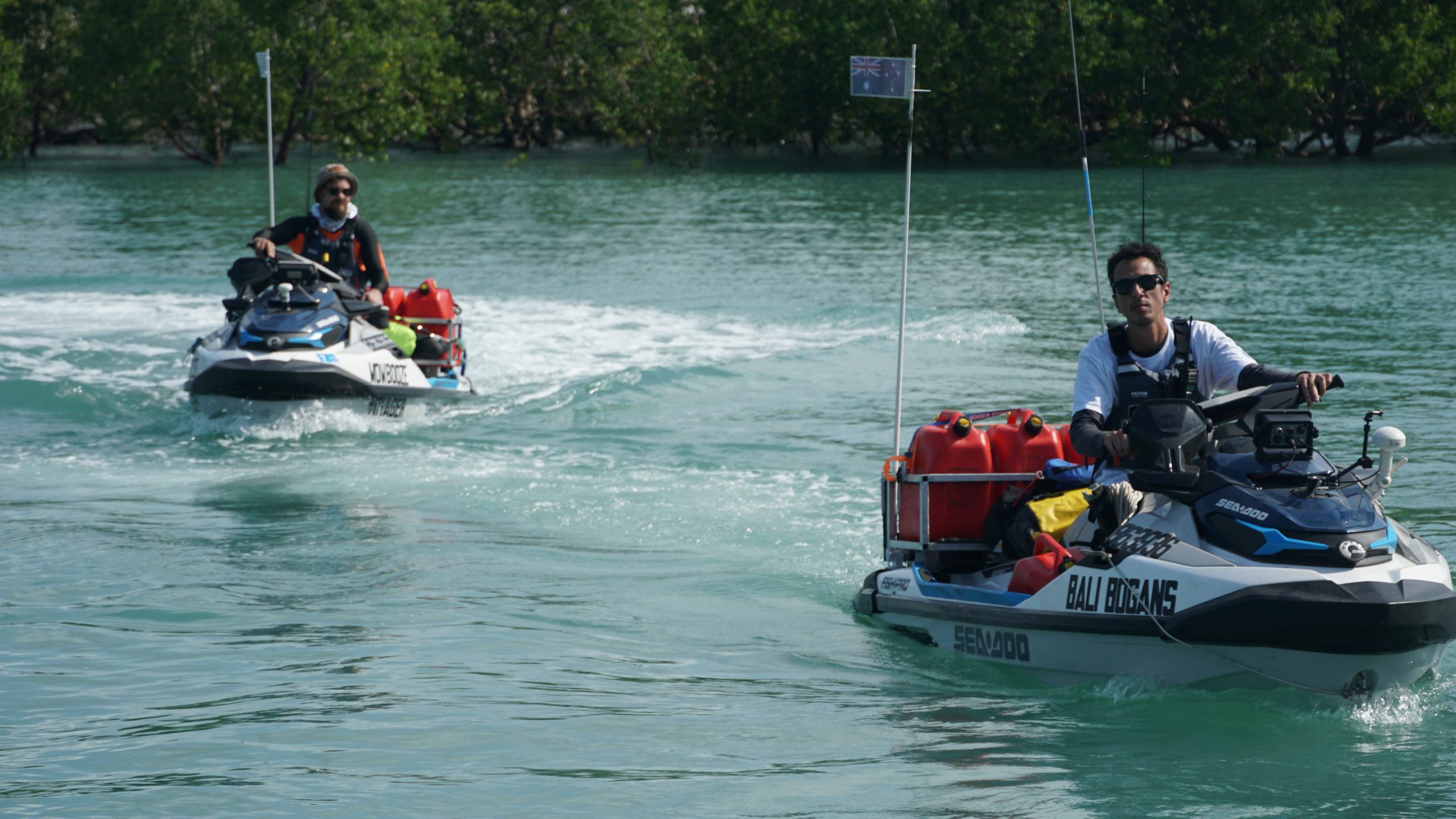
Above: Daniel Wilkins (front) and Benjamin Nock (rear) leave Darwin on Wednesday 6 November 2024. Photo: Barry Park.
However, after clearing Customs in Darwin, officers from Australian Customs and Border Force advised they were not allowed to dock in any Australian territories because they had technically left the country.
After refuelling at Port Melville with the help of locals, they decided to ride another 40km north to a sheltered bay off Seagull Island, where they slept on their Sea-Doo Fish Pro watercraft because they were not allowed on land there either, as they were still in Australia.
While this gave them a head-start on the next day’s ride, it meant they missed out on favourable tides and instead had to ride against the tide, which used more fuel and brought them perilously close to their range limit on the longest leg of the entire journey.
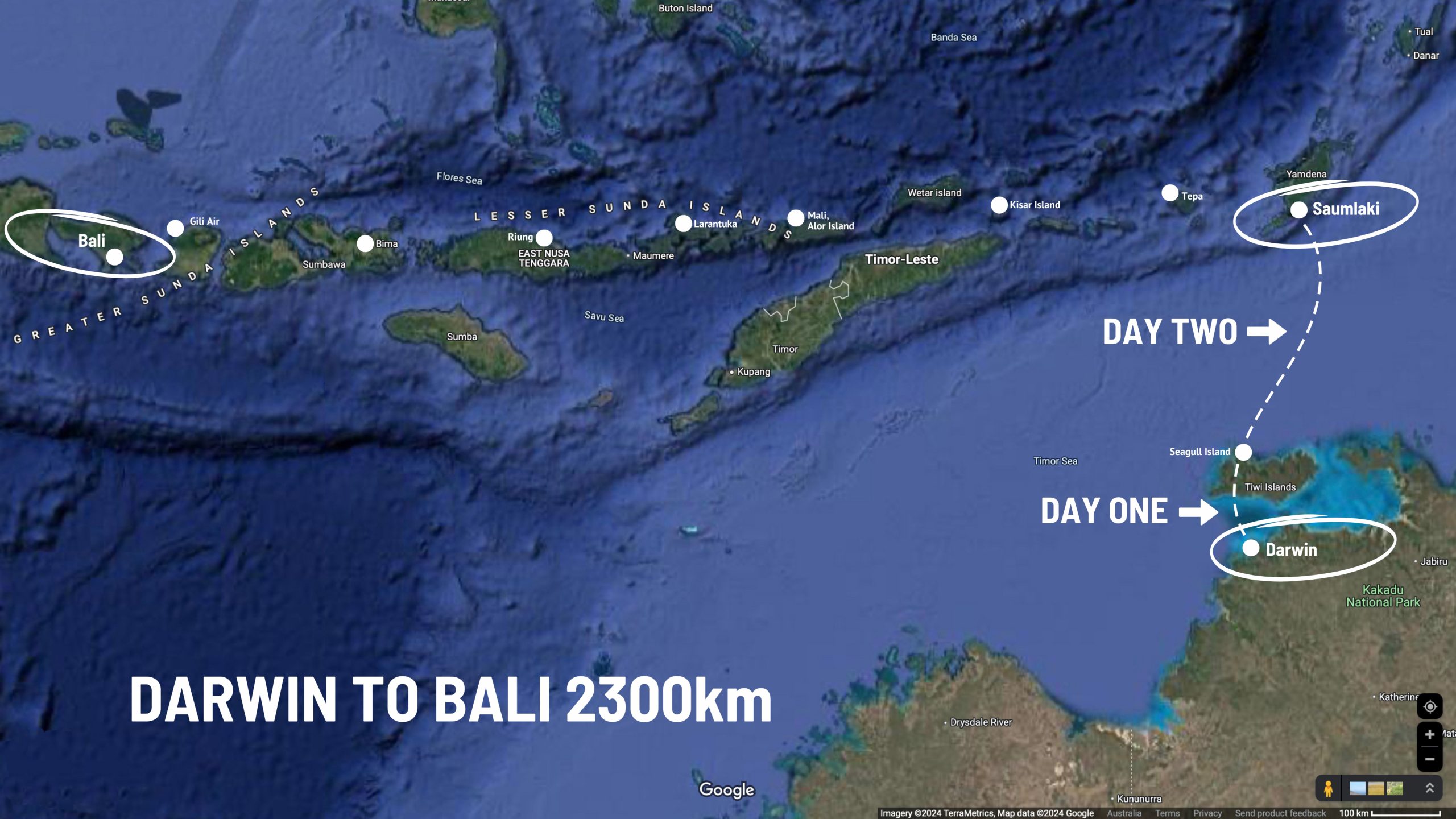
To check on the progress so far, Watercraft Zone interviewed Daniel Wilkins by phone while he was in Saumlaki.
Here is a transcript of the interview:
WZ: How was Day One?
“After we checked out of Darwin with Australian Border Force, we weren’t allowed to stop or sleep anywhere else on land in Australia, because we had technically left the country at Darwin.
“So on the first night we had to sleep on the Jet Skis.
“When we got to Port Melville, Australian Border Force had already called ahead and told them we weren’t allowed to tie up to their jetty.
“To refuel, we had to give some locals my credit card and we passed them our empty jerry cans and they went and got fuel for us.
“We weren’t allowed to stand on the dock or even tie up to the dock.
“So we decided to leave Port Melville and keep heading north to Seagull Island to try to find calm water to sleep for the night.
WZ: Did you really sleep on the skis? That must have been horrendous.
“We weren’t allowed to get off the craft at Seagull Island either – because that was still in Australian waters – so we just dropped anchor in what we were hoping would be a nice calm bay.
“Unfortunately there was a pretty strong onshore wind and a fair bit of swell. The waves were licking up from the wind. The wind was blowing for most of the night, but finally the wind eased at about 3:30am in the morning.
“We had a couple of those small aircraft neck pillows to rest our heads on. I don’t think Ben got much sleep, but I managed to get some sleep at least.
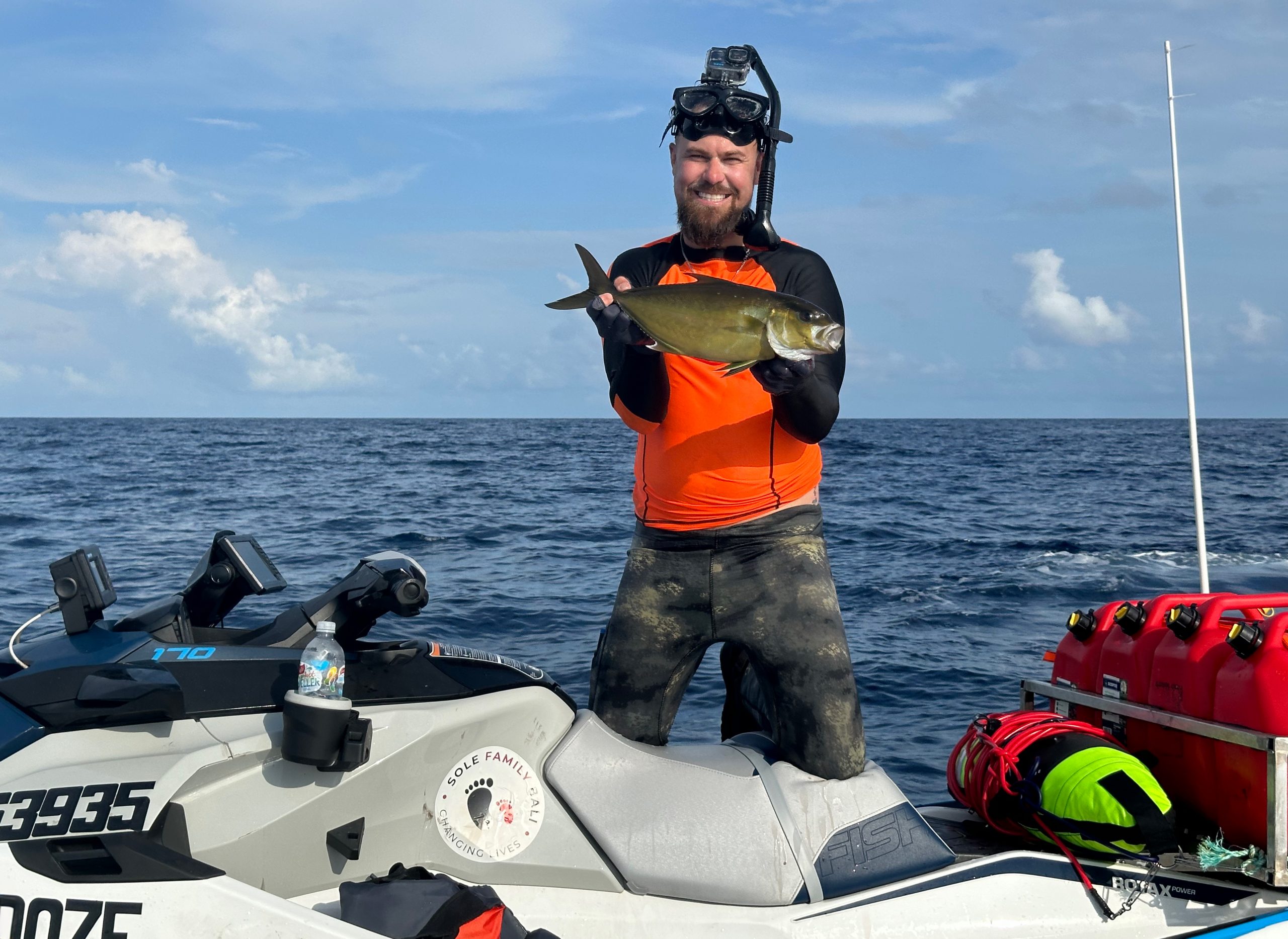
WZ: What have you been doing for food and water?
“We had about five litres of water each and we went through most of that on Day One.
“We got more water provisions from Port Melville during our fuel stop, so we had enough water for Day Two.
“During the ride we snacked on protein bars.
“When we stopped for the night on Day One we had a flask of hot water and we boiled up some instant noodles, and we also had some beef jerky for dinner.
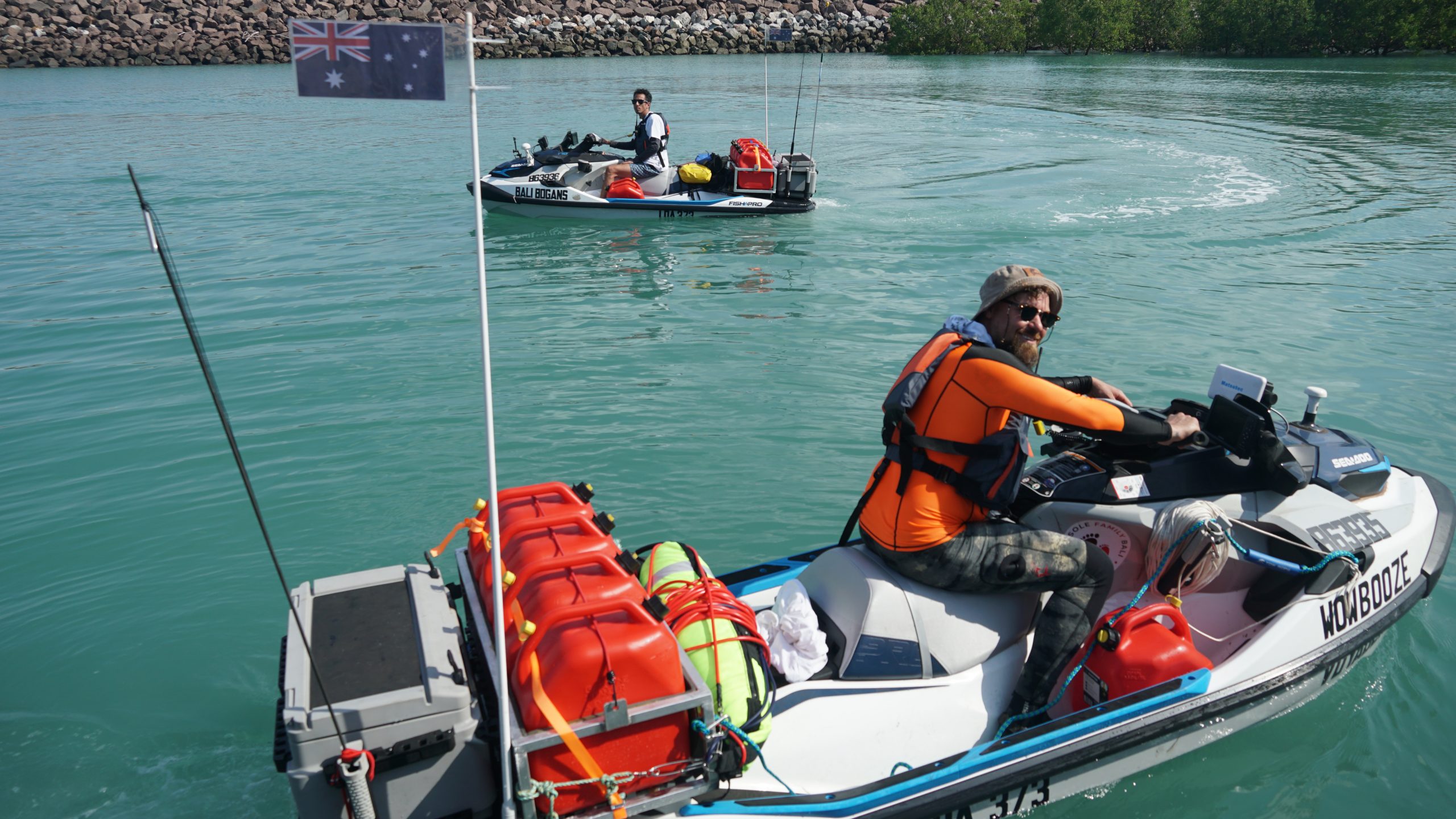
Above: Benjamin Nock (front) and Daniel Wilkins (rear) leave Darwin on Wednesday 6 November 2024. Photo: Barry Park.
WZ: You left Darwin about 10:30am local time. What time did you arrive at Port Melville?
“About three hours after we left Darwin, we got to Port Melville at about 1:30pm, and then we learned Australian Border Force had called them up and told them we can’t go on the land there.
“After getting some fuel and water with the help of the locals at Port Melville, we decided to keep heading north to Seagull Island – about 40km or 50km away – which would be a better launching point for the next day.
“Day Two was our longest leg of the trip, more than 400km of riding in open waters and nowhere to get fuel, so we figured we may as well get a head start.
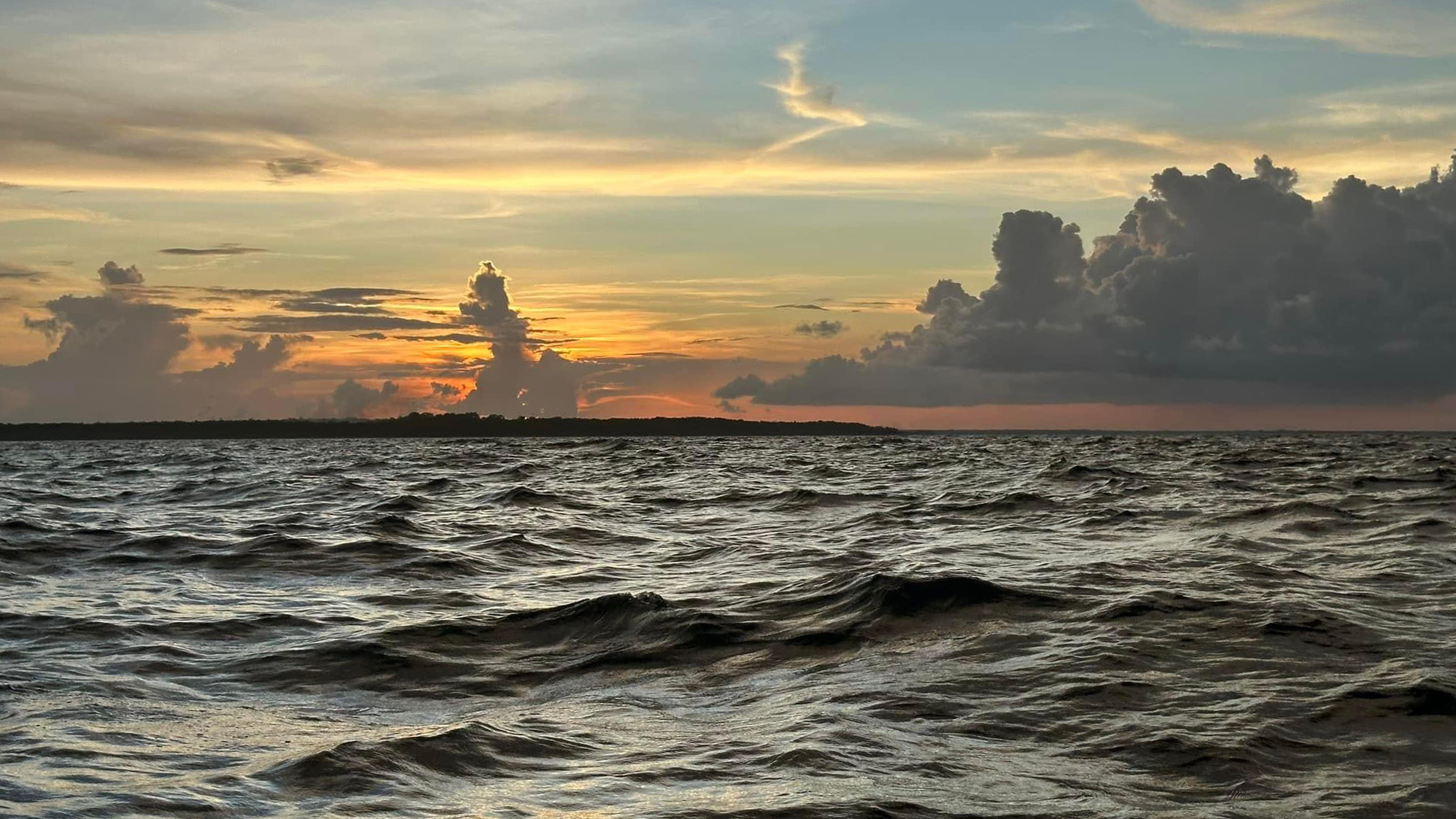
WZ: What time did you start riding on Day Two?
“We left Seagull Island about 4:45am while it was still dark. We were using lamps for light and we had to navigate our way out of a sand bar. That was pretty scary. It was pitch black, but we made it.
“Tackling a sand bar in the dark is not easy.
“We just followed the navigation (screen) in the dark until the sun came up about an hour later.
“The original plan was to start Day Two in Port Melville and ride the outgoing tide early in the morning to save on fuel.
“But we couldn’t do that because we had to continue on from Port Melville the afternoon before – and we chewed up a lot of fuel because we had to go against the tide to get to Seagull Island for our first stop that night.
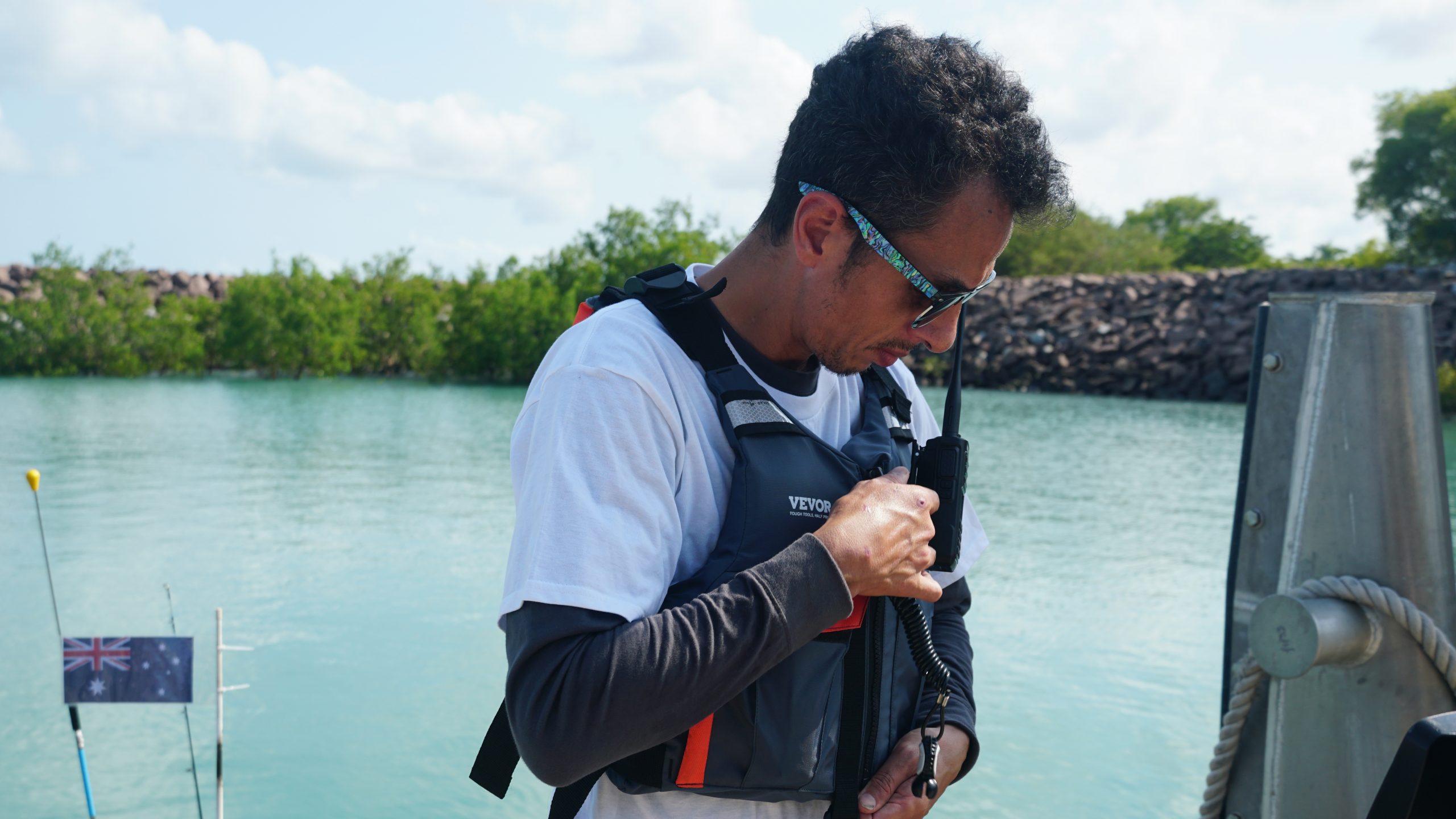
Above: Daniel Wilkins secures his life jacket and checks his portable radio as he prepares to leave Darwin. Photo: Barry Park.
“On the morning of Day Two I decided to aim for a small island about 100km south of our original destination of Saumlaki. It’s a very small, remote island, but there are villages and people with scooters and motorbikes, so I thought we might be able to get some fuel there.
“So I set the course to there, rather than Saumlaki.
“But as we got closer – about 100km offshore – we calculated we probably did have enough fuel to get us all the way to Saumlaki.
“So I rerouted the trip back to our original Day Two destination of Saumlaki.
“In the planning stages of this trip, the leg from Seagull Island to Saumlaki was estimated to be 390km in a straight line, but we ended up doing closer to 420km or 430km on the day.
“In the end, as we got closer to Saumlaki, it really was touch-and-go whether we would have enough fuel.
“All the jerry cans had been emptied and the main tank in each ski was much closer to empty than we would have liked, or what we had planned on.
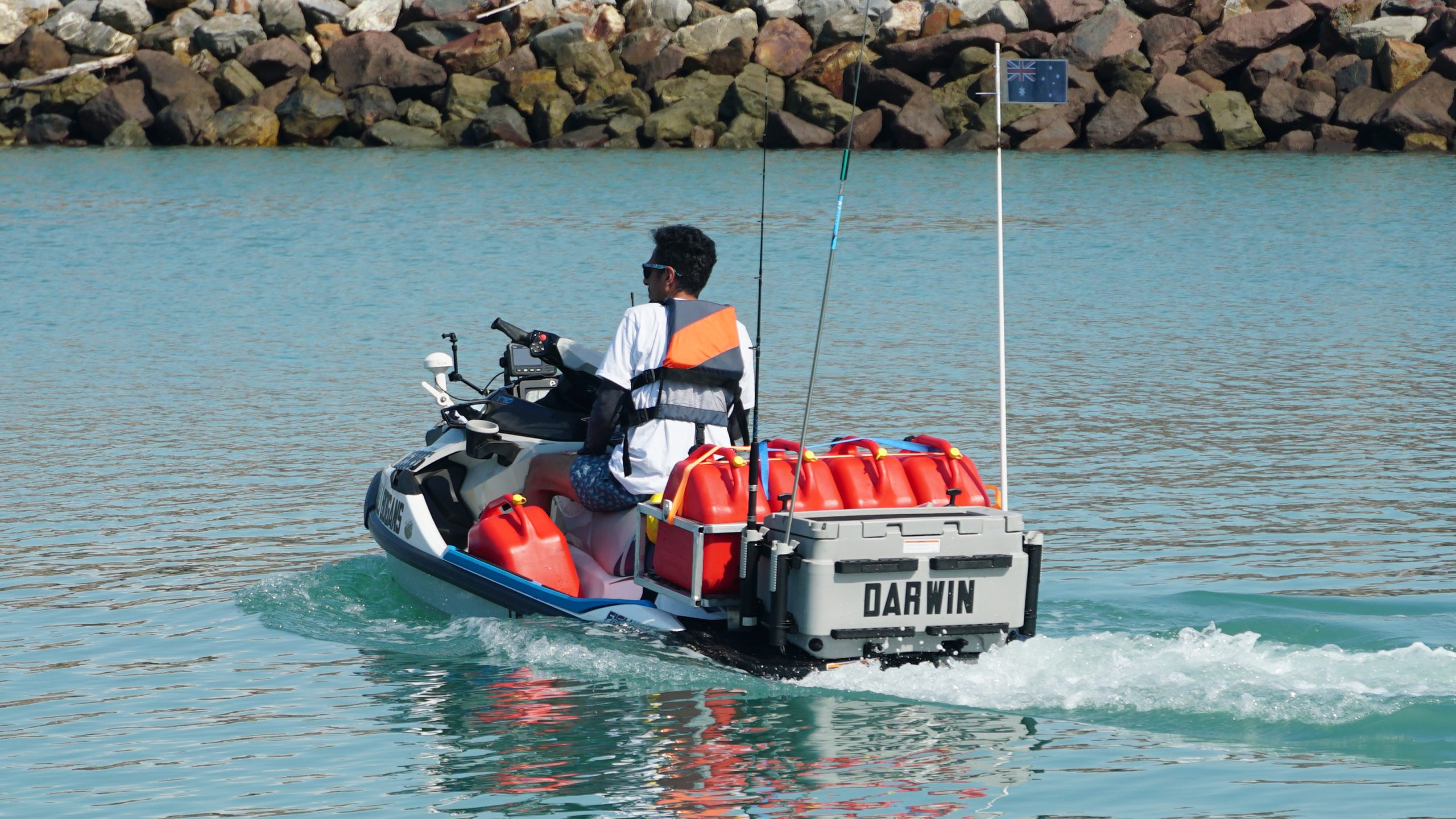
Above: Daniel Wilkins departs Darwin on Wednesday 6 November 2024. Photo: Barry Park.
“The low-fuel warning buzzers had been going for quite a while. Ben had about one or two litres of fuel left in his tank and I had about five or six litres left. We were very lucky.
“When we left Seagull Island that morning the conditions were not ideal. The water was choppy and there were big rolling waves, so we couldn’t go much faster than about 15 to 20 knots.
“But by about midday, the water started to glass out. As we got closer to Indonesia, we had very smooth water.
“We even stopped at a FAD (Fishing Aggregator Device, a submersed man-made structure that attracts fish and other marine life) as we got closer to Saumlaki. We jumped in and shot (speared) a decent size fish for dinner.
“We couldn’t put the fish in the cooler box because we had recovery gear in there. So we just put the fish in the footwell of the ski and kept going.
“We ended up giving the fish to the Coast Guard at Saumlaki who greeted us, because the Customs office had closed by the time we got there.
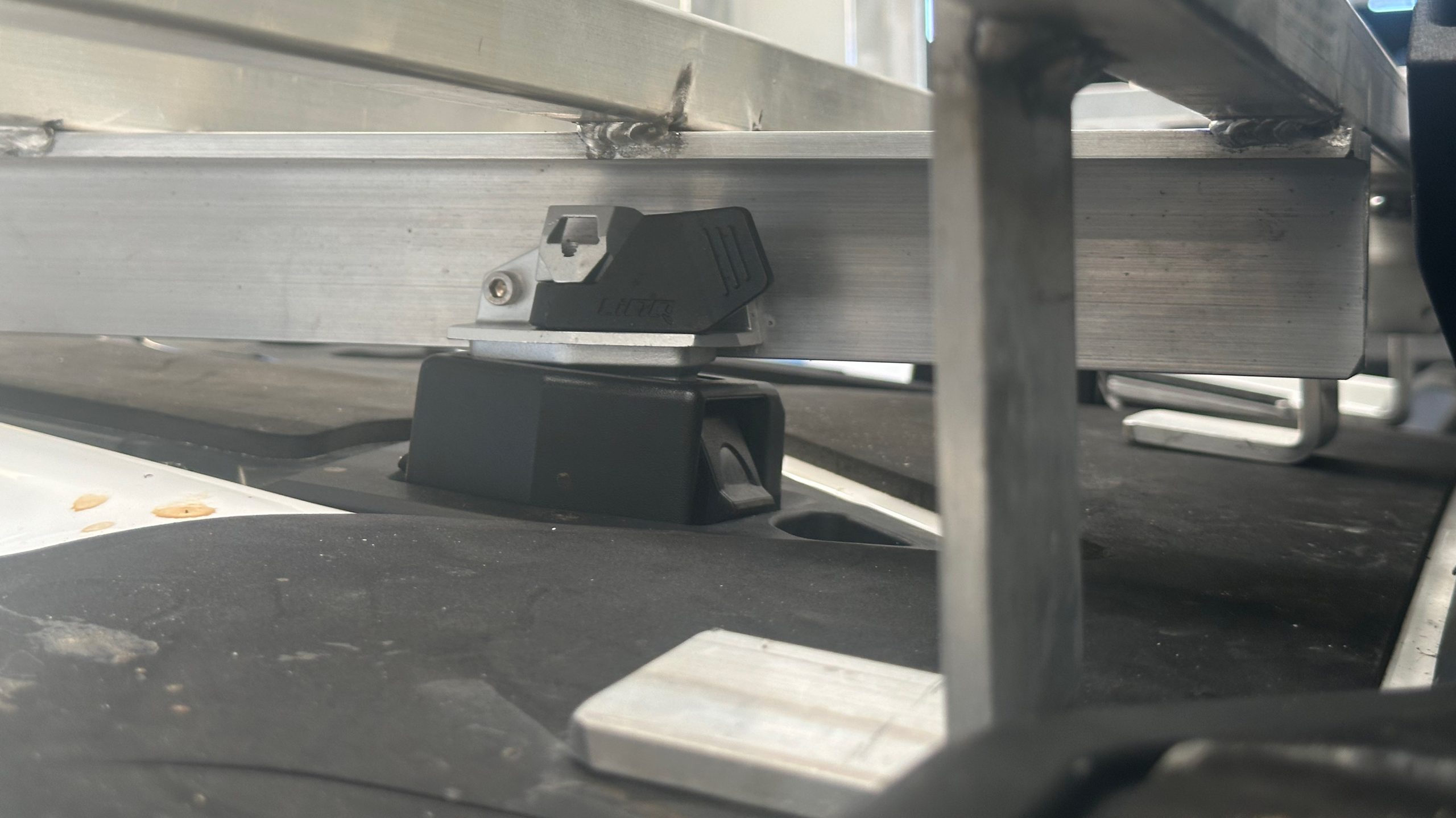
WZ: Have the skis had any mechanical problems?
“The two Linq attachment points on Ben’s ski broke, but he was thrashing it more than me and he also emptied his jerry cans unevenly.
“That didn’t help the weight distribution, and the rack moved around a bit.
“His fuel rack eventually came loose after breaking the Linq cleats, and the impact also bent two of the aluminium legs of the rack.
“We tied the rack down with ratchet straps so we could keep going.
“We have spare Linq mounts and we will get those fitted before the next leg.
“The next legs from here to Bali are much shorter than what we have just done, so we no longer need the extra jerry cans in the front footwells. We gave them away to some locals. We only need the jerry cans on the fuel racks now.
“The jerry cans actually wedged in to the front footwells pretty tight, we didn’t lose any of them, they didn’t bounce around.
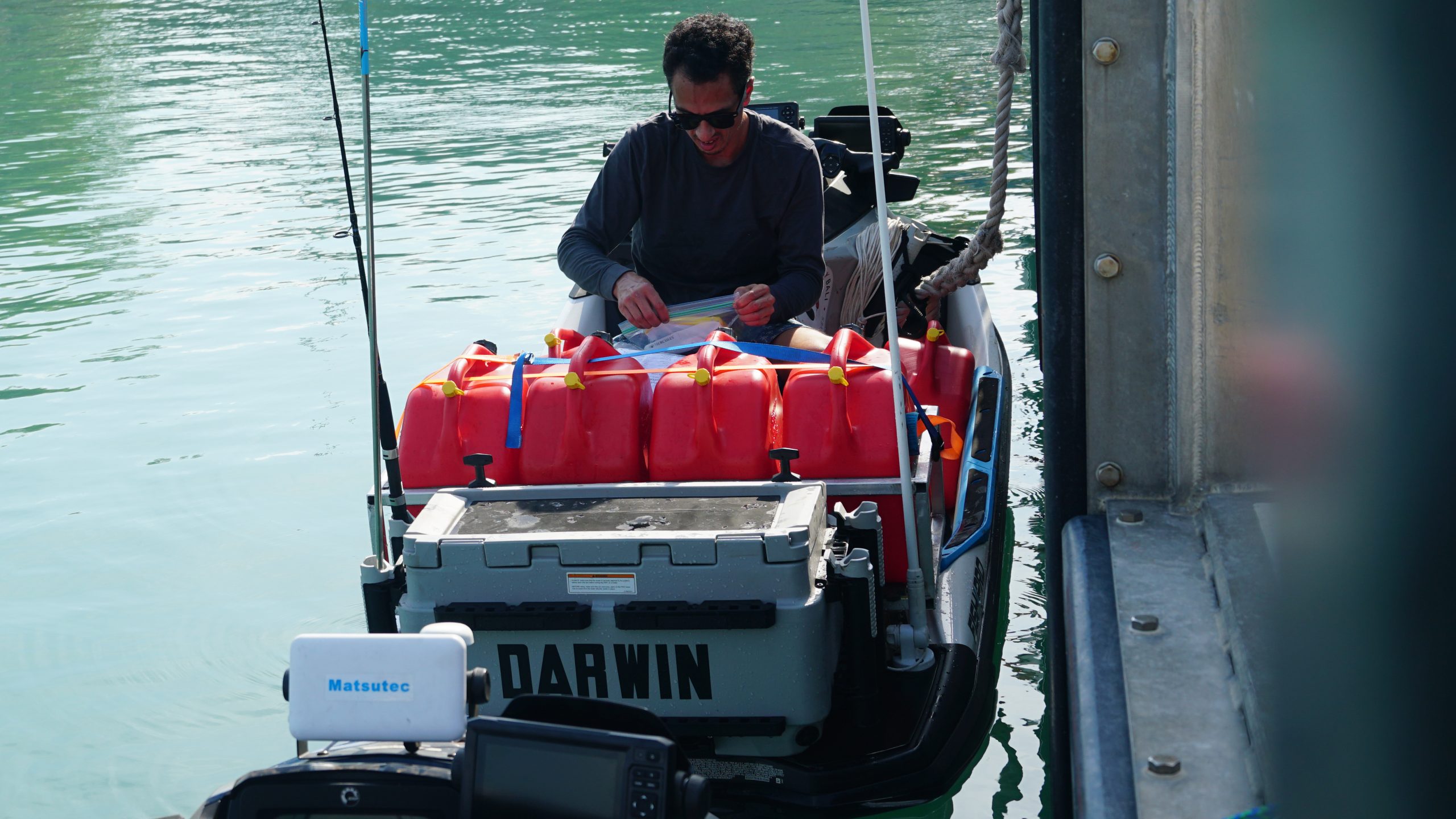
Above: Daniel Wilkins checks his paperwork before leaving Darwin on Wednesday 6 November 2024. Photo: Barry Park.
WZ: Now you’ve completed the most challenging part of the journey, is there a new appreciation for the scale of this expedition on a Jet Ski?
“We might have started this ride as novices, but we’re not novices now.
“We’re fast learners. Plus, although we might not have much experience on Jet Skis, a lot of survival skills at sea are about common sense and problem solving.”
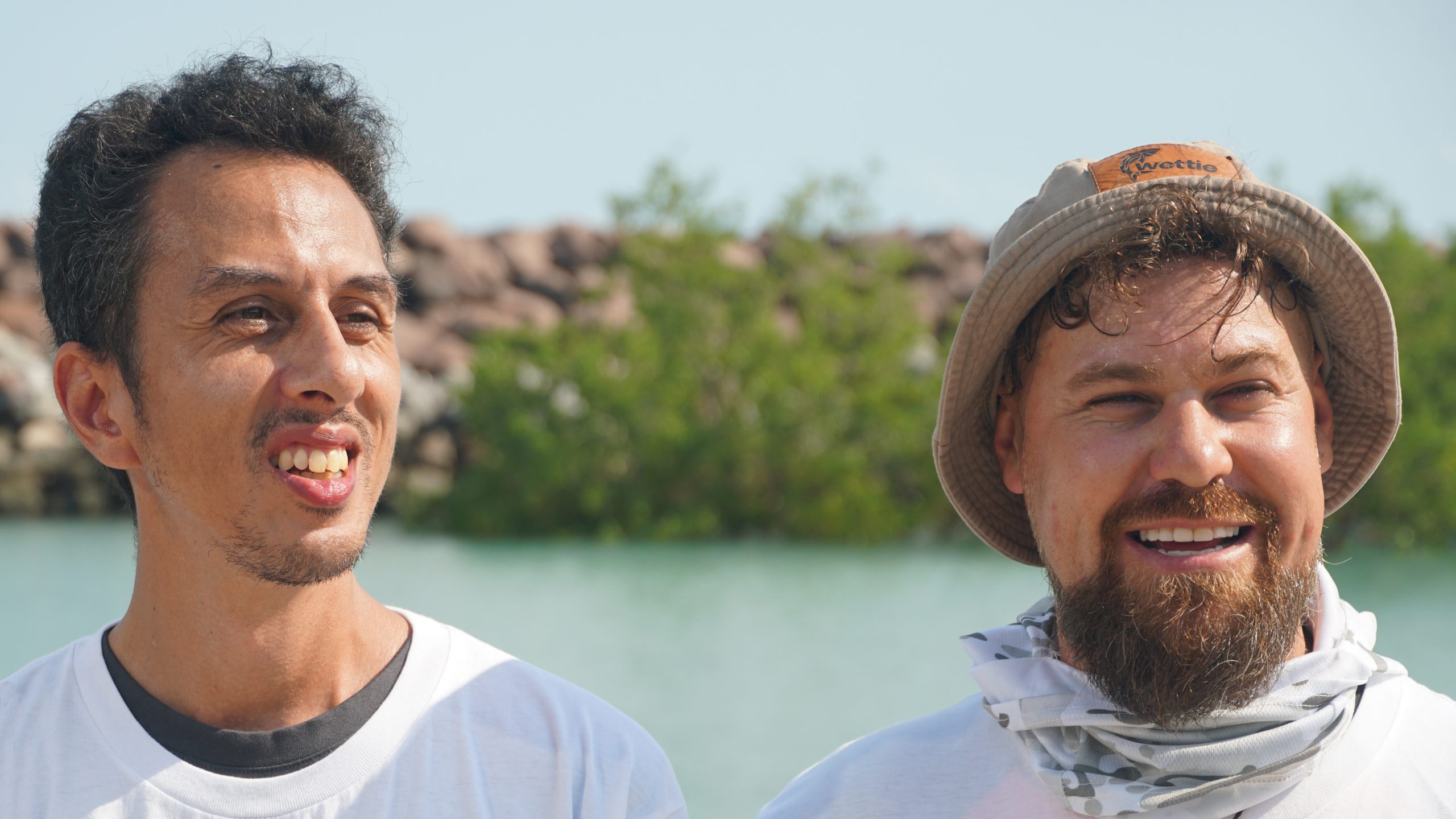
Above: Daniel Wilkins (left) and Benjamin Nock (right). Photo: Barry Park.
Darwin to Bali by Jet Ski, a quick recap:
The 2300km journey is expected to include 10 days of riding – but it could take a total of up to four weeks to complete, to allow for poor weather and other unforeseen delays.
While the organiser and primary rider Daniel Wilkins aims to complete the entire journey from start to finish, the second Jet Ski will be shared by three mates, who will each do a portion of the trip, before handing over the craft to the next rider.
Depending on where they stop each night, the riders will camp on remote beaches, stay with local villagers, or book accomodation on islands with facilities.
The idea for the international Jet Ski journey came from Daniel Wilkins, aged 41, a former chef originally from Wollongong NSW who has been living in Bali for 12 years, where he owns an alcohol home-delivery service called Wow Booze.
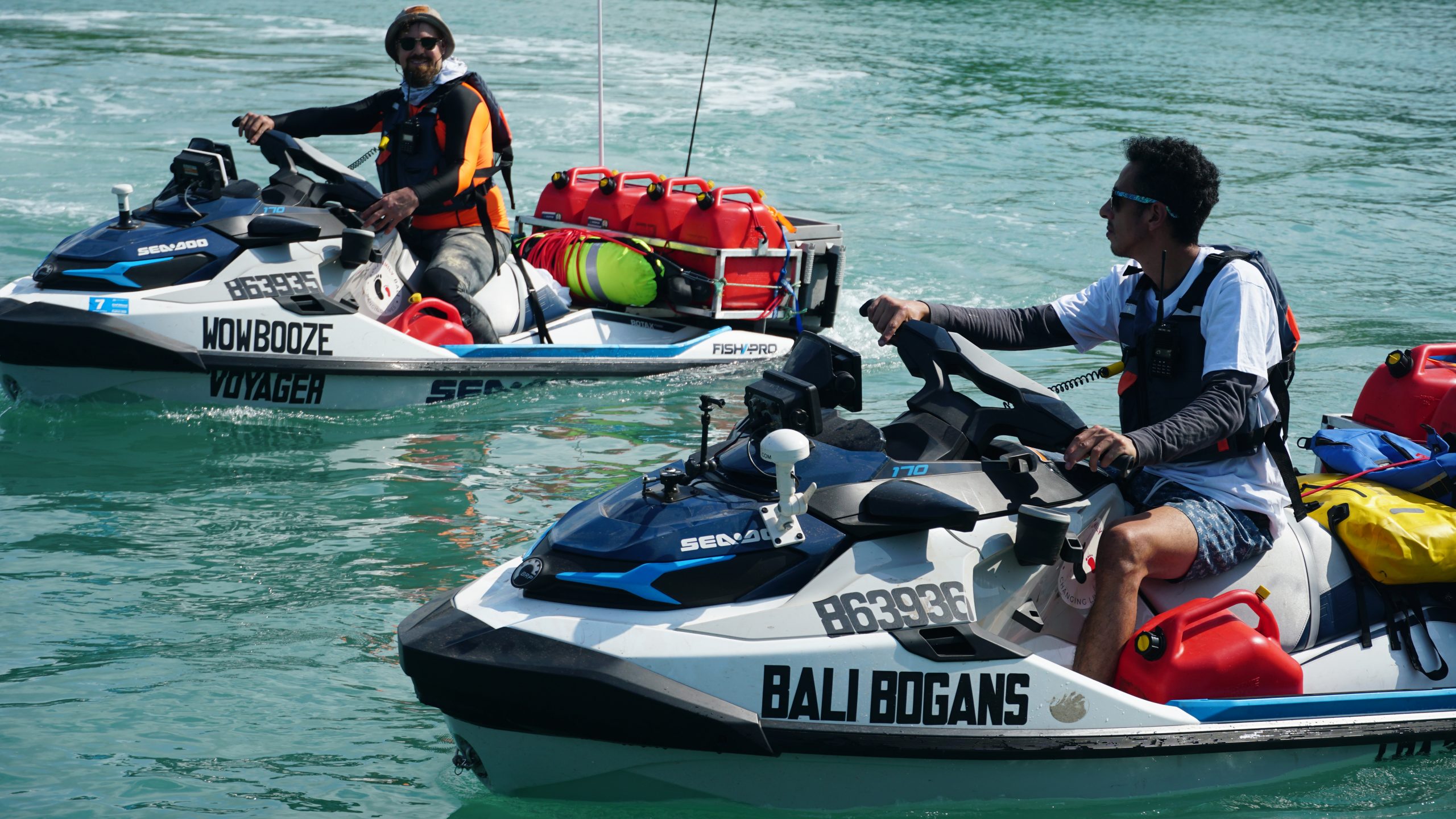
Above: Daniel Wilkins (front) and Benjamin Nock (rear) leave Darwin earlier this week. Photo: Barry Park.
Wilkins says he plans to complete the entire 2300km journey from start to finish.
The second Jet Ski (decked out with identical modifications) will be shared by three of Wilkins’ mates – from Australia, New Zealand, and Indonesia – who will each complete one of three legs.
The rider of the second Jet Ski for the first portion of the journey is New Zealand man Benjamin Nock, aged 35 – who works in Tasmania as a marine engineer and diver for Tassal Salmon, and previously worked with Wilkins on a pearl farm in the Northern Territory.
The rider of the second Jet Ski for the middle portion of the journey is Indonesian man Indra Palguna, aged 31 – who is Wilkins’ fishing buddy in Bali.
The rider of the second Jet Ski for the third portion of the journey is Zac Martin, aged 42, one of Wilkins’ former school friends from Wollongong NSW who now lives in Perth WA.
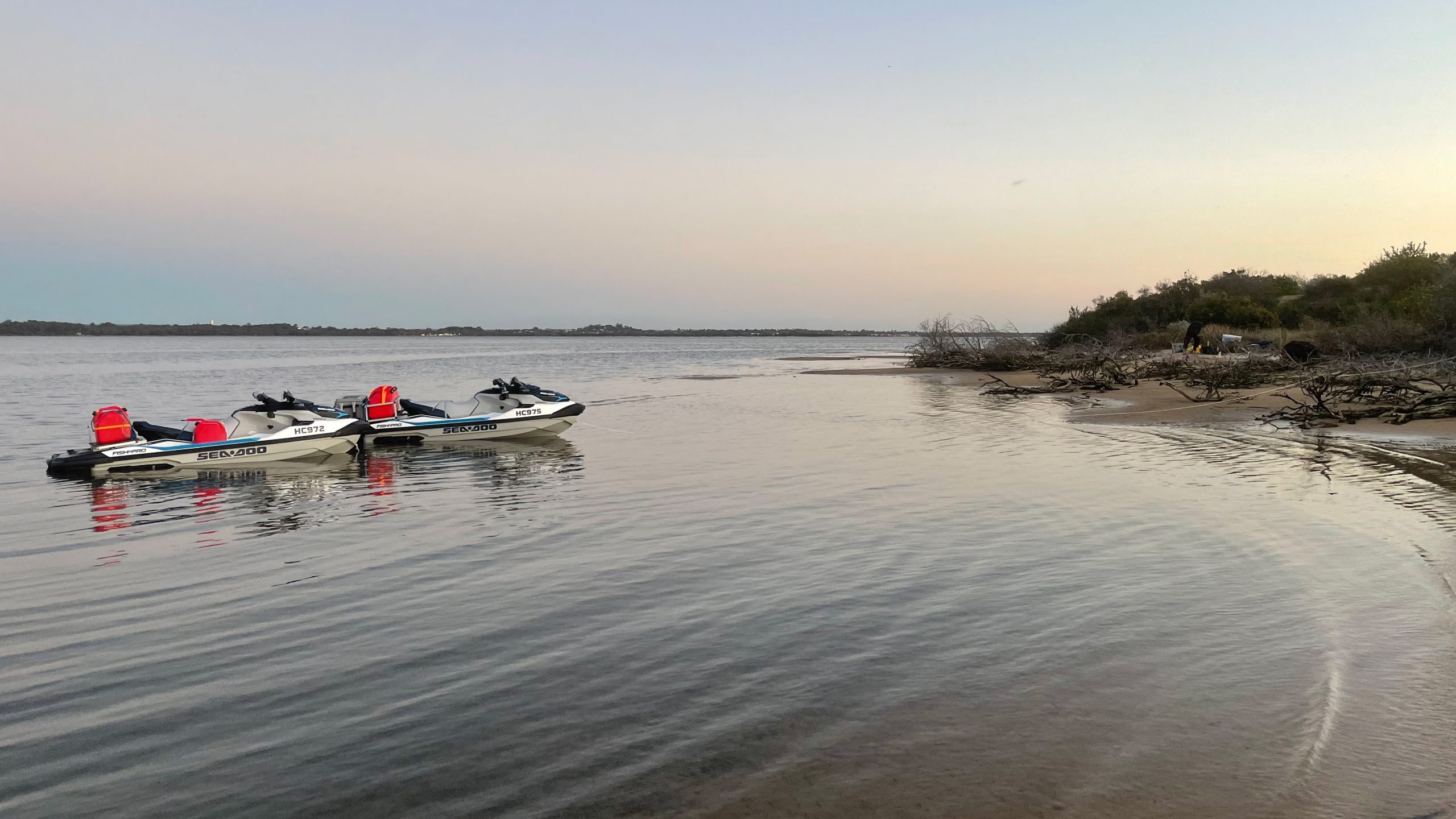
Above: The Sea-Doo Fish Pro watercraft on a ‘shakedown’ ride south of Perth, to test equipment before the Darwin to Bali trip.
There is no support vessel for the trip, the riders will only have each other to rely on if they strike trouble.
To ensure they have plenty of fuel – in addition to the standard 70-litre fuel tank in the nose of the ski – each Sea-Doo Fish Pro is equipped with a specially-made rack mounted on the rear deck, which can carry four 25-litre fuel cans.
Plus two more 25-litre fuel cans (one in each foot well) were required for the first two days of the trip.
Fully loaded each Sea-Doo Fish Pro had a total fuel capacity of 220 litres (70 litres from the standard fuel bladder, plus 150 litres across six 25-litre fuel cans).
This was calculated to deliver a maximum riding range of 440km in ideal conditions, however consumption could increase in adverse conditions.
Wilkins says he does not intend to ride the Jet Skis back to Australia. The plan for now is to keep the skis in Bali once they get there.
MORE: Darwin to Bali Jet Ski ride is go!
MORE: Bold plan to ride a Jet Ski from Darwin to Bali
MORE: First solo Jet Ski ride around Australia
MORE: First solo Jet Ski ride around New Zealand
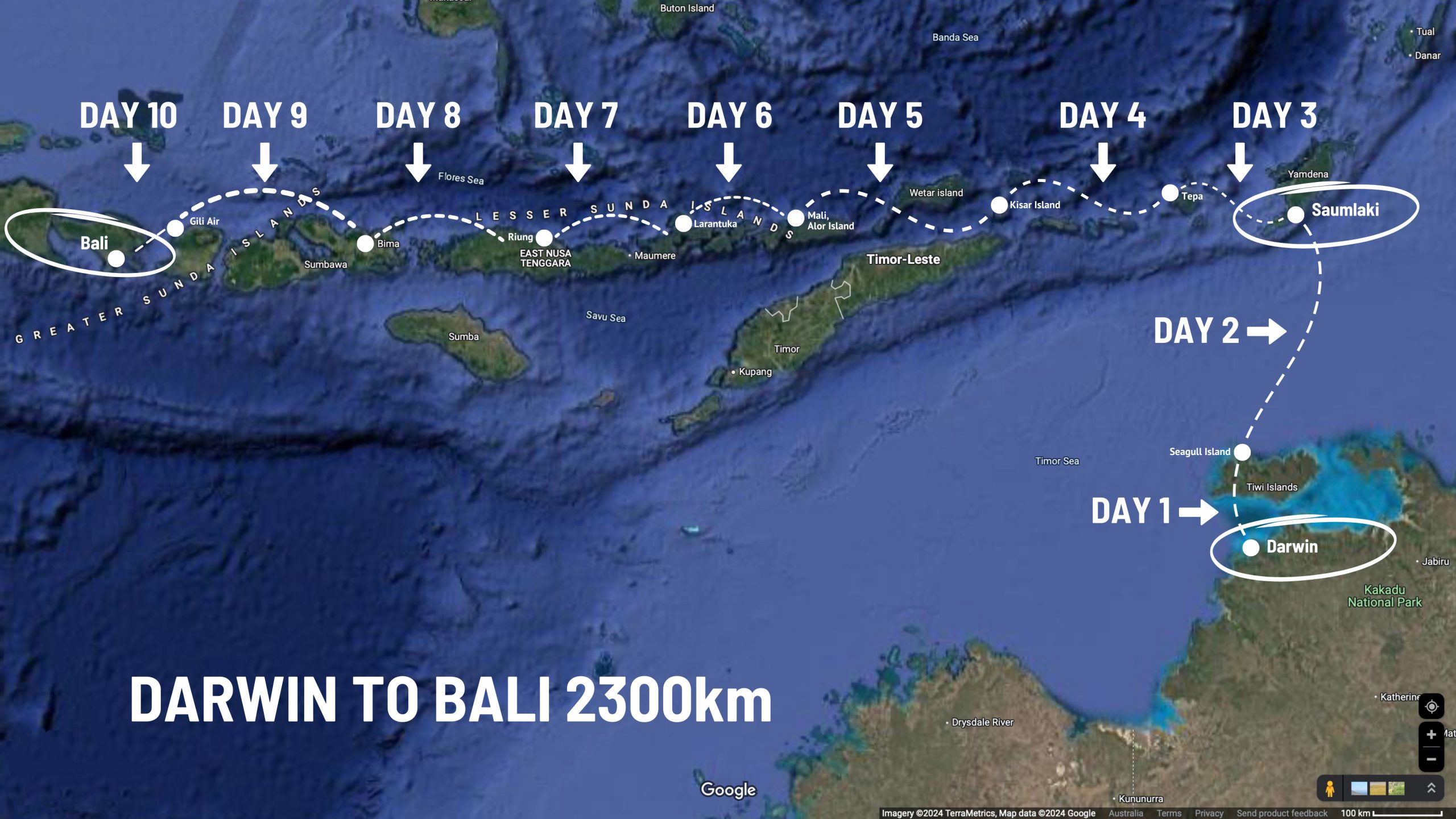
The plan: Darwin to Bali via Jet Ski in 10 days (over three to four weeks)
Day 1 (142km)
Darwin to Pirlangimpi, Melville Island (camp on Seagull Island)
Day 2 (390km)
Seagull Island to Saumlaki
Day 3 (200km)
Saumlaki to Tepa, Babar Island
Day 4 (280km)
Tepa, Babar Island to Wonreli Harbour, Kisar Island
Day 5 (280km)
Wonreli, Kisar Island to Mali, Alor Island
*Rider of the second ski hands over to the next rider in Mali, Alor Island (pending conditions)
Day 6 (187km)
Mali, Alor Island to Larantuka, Flores
Day 7 (250km)
Larantuka, Flores to Riung, Flores
Day 8 (280km)
Riung, Flores to Bima Sumbawa, Flores
*Rider of the second ski hands over to the next rider in Labuan, Bajo (pending conditions)
Day 9 (315km)
Bima, Sumbawa, Gili Air, Lombok
Day 10 (105km)
Gili Air, Lombok to Sanur Beach, Bali
Approximate total distance (excluding detours and navigation variations): 2300km
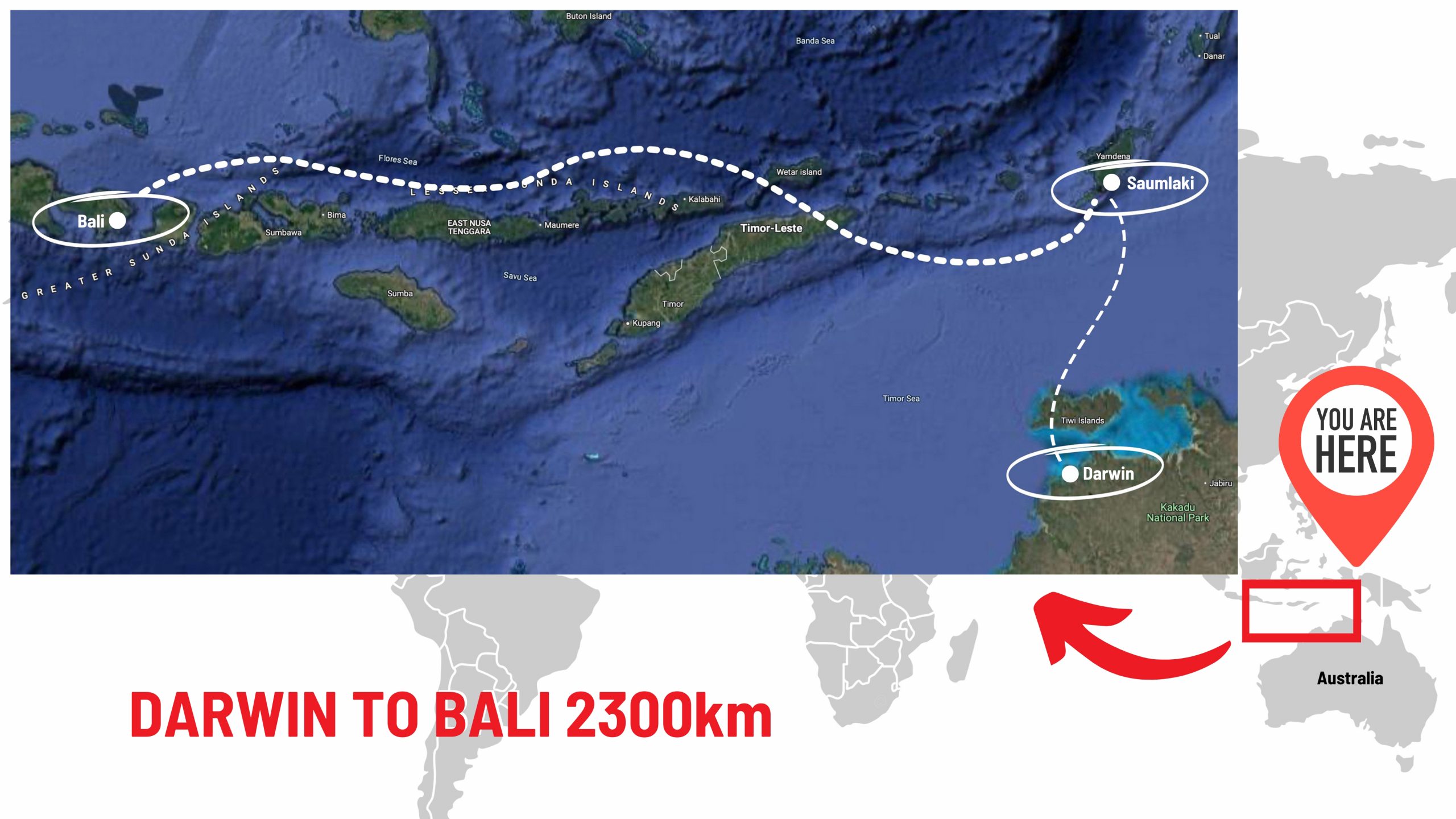
Other sightseeing stopovers:
- Mount Tambora
- Seven Islands National Park
- Komodo Island
- Mojo Island
- Small islands rarely visited by outsiders
MORE: All our Sea-Doo coverage in one click
MORE: All our Yamaha WaveRunner coverage in one click
MORE: All our Kawasaki Jet Ski coverage in one click
MORE: All our news coverage in one click
MORE: Follow us on Facebook
MORE: Follow us on YouTube



